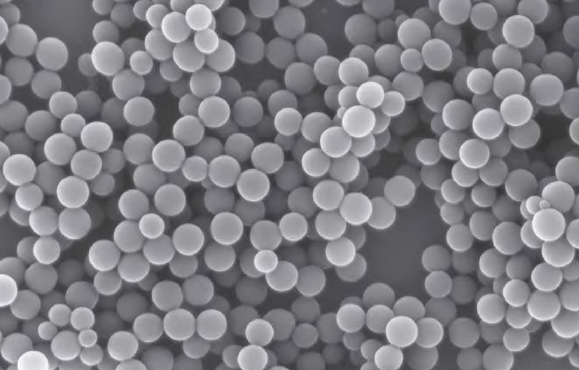Functional particles
Functional surfaces
The surfaces of nano- and microparticles can be additionally modified with functional properties and active groups to optimize the desired material properties:
- Specific adsorber particles
- Biofunctionalization
- Click chemistry
- Active ester
Adjustment and optimization of the matrix properties
In addition, blends of several materials that combine the advantages of both materials are being developed in such a manner that the specific properties can be adjusted in a targeted manner. Chemical modification of the materials at Fraunhofer IGB also enables completely new properties of the materials in bulk and in particulate form. We develop this modification individually in cooperation with our customers.
Moreover, it is possible to specifically slow down or reduce the release of active substances. For this purpose, in addition to chemical modification, we also use biocompatible crosslinking reactions, which are based on electrostatic interactions and thus contribute to the prevention of harmful substances in the environment and the body.
 Fraunhofer Institute for Interfacial Engineering and Biotechnology IGB
Fraunhofer Institute for Interfacial Engineering and Biotechnology IGB